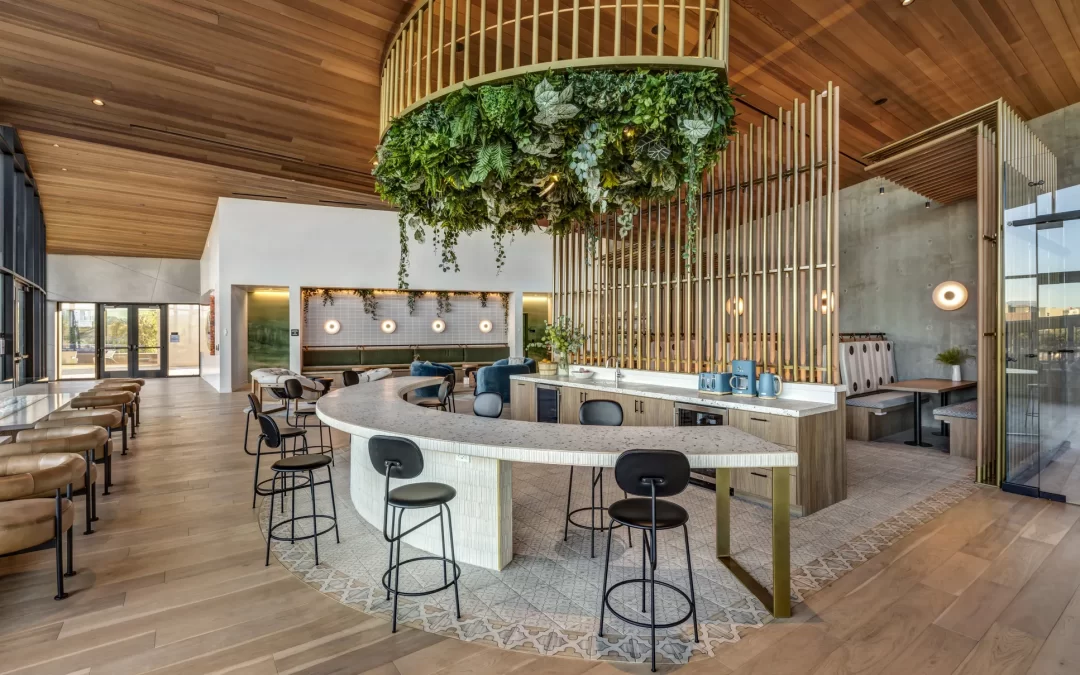Biophilic Hospitality Design: A Natural Approach to Guest Wellness
In today’s fast-paced, urbanized world, travelers often seek refuge in environments that offer calm, tranquility, and a sense of connection with nature. This demand has given rise to biophilic hospitality design, a trend that seamlessly integrates natural elements into architectural and interior design. Far from being a fleeting fad, biophilic design is rooted in the human need for connection with the natural world, offering both aesthetic and psychological benefits that make it a cornerstone of modern hospitality spaces.
What is Biophilic Design?
Biophilic design is the practice of incorporating natural elements—such as greenery, natural light, organic materials, and water features—into built environments to promote physical and emotional well-being. In the hospitality industry, this approach creates immersive, restorative spaces that align with guests’ desires for relaxation and rejuvenation.
Core Principles of Biophilic Hospitality Design
- Incorporation of Greenery: The most recognizable aspect of biophilic design is the use of plants. From indoor gardens and living walls to potted plants in guestrooms, greenery not only purifies the air but also creates a soothing visual impact.
- Maximizing Natural Light: Large windows, skylights, and open layouts allow sunlight to flood hospitality spaces, creating a warm, inviting ambiance while reducing reliance on artificial lighting.
- Use of Natural Materials: Materials like wood, stone, bamboo, and cork bring organic textures into interiors, creating a tactile connection to the natural world.
- Water Features: Fountains, indoor ponds, or even aquariums introduce the calming presence of water, which has been shown to reduce stress and enhance relaxation.
- Views of Nature: Incorporating expansive views of surrounding landscapes, whether it’s a beach, mountain, or urban skyline with greenery, reinforces the connection to nature.
- Organic Shapes and Patterns: Curved furniture, textured walls, and biomorphic patterns mimic the forms found in nature, creating a harmonious and aesthetically pleasing environment.
- Dynamic Environmental Features: Spaces that incorporate elements like moving water, airflow, or adjustable lighting mimic the variability of natural environments, fostering comfort and engagement.
Benefits of Biophilic Design in Hospitality
- Enhanced Guest Satisfaction: Guests are drawn to environments that make them feel relaxed and rejuvenated. Biophilic elements provide sensory experiences that leave lasting impressions.
- Health and Wellness: Natural light, improved air quality, and calming greenery contribute to better sleep, reduced stress, and overall wellness for guests.
- Brand Differentiation: Hotels and resorts that emphasize biophilic design stand out as destinations that care about both the environment and their guests’ well-being.
- Sustainability: Biophilic design often overlaps with sustainable practices, such as energy-efficient lighting, the use of local materials, and water conservation efforts.
- Increased Revenue: Studies show that guests are willing to pay a premium for accommodations that provide unique and restorative experiences, making biophilic design a profitable investment.
Strategies for Implementing Biophilic Design in Hospitality
- Green Walls and Vertical Gardens: These living installations serve as both art and air purifiers, making them ideal for lobbies, spas, and dining areas.
- Natural Light Optimization: Use large windows, reflective surfaces, and strategically placed mirrors to maximize the impact of natural light throughout the property.
- Indoor-Outdoor Integration: Create seamless transitions between indoor and outdoor spaces through patios, sliding glass walls, or open-air dining areas.
- Local Flora and Materials: Incorporate plants native to the area and locally sourced materials to create an authentic sense of place.
- Biophilic Guestrooms: Offer spaces with views of nature, soft natural light, and decor that incorporates natural textures and tones.
- Water Features: Consider adding small fountains in lobbies, infinity pools in resorts, or even water-inspired art installations.
- Multi-Sensory Design: Enhance the biophilic experience with soft natural scents (e.g., lavender or pine), nature-inspired soundscapes, and tactile decor elements.
Real-World Example: Biophilic Design in Action
Soneva Kiri Resort, Thailand
Soneva Kiri is a luxury resort that exemplifies biophilic hospitality design. Nestled within a tropical forest, the resort integrates natural materials like bamboo and teakwood into its architecture. Guest villas are surrounded by lush greenery, with expansive open layouts that blend seamlessly into the outdoors. Features like infinity pools overlooking the forest canopy and dining areas constructed in treetops provide a profound connection to nature, enhancing the overall guest experience.
Challenges in Biophilic Hospitality Design
- Maintenance: Living walls, indoor gardens, and other greenery require consistent upkeep to remain vibrant and functional.
- Space Constraints: Urban properties may struggle to incorporate large biophilic elements due to limited square footage.
- Budget Considerations: High-quality materials and specialized installations like water features can be costly.
- Balancing Modernity with Nature: It’s important to integrate natural elements without compromising contemporary design aesthetics.
Future Trends in Biophilic Hospitality Design
The biophilic design movement shows no signs of slowing down, with future innovations likely to include:
- Advanced Green Technology: Smart systems for irrigation, lighting, and temperature control to maintain biophilic elements efficiently.
- Biophilic Architecture: Buildings designed to mimic natural formations, such as cliffside structures or treehouse-inspired layouts.
- Enhanced Multi-Sensory Experiences: Spaces that incorporate interactive natural elements, like touch-sensitive walls or sound-activated water features.
- Sustainability Integration: The use of recycled materials, renewable energy, and green roofs to create eco-friendly hospitality spaces.
Conclusion
Biophilic hospitality design is more than a trend—it’s a thoughtful approach to creating environments that resonate with human instincts and desires. By integrating natural elements into architecture and interiors, hospitality brands can craft spaces that offer comfort, wellness, and memorable experiences. As travelers increasingly seek restorative getaways, biophilic design will continue to play a pivotal role in shaping the future of hospitality.



